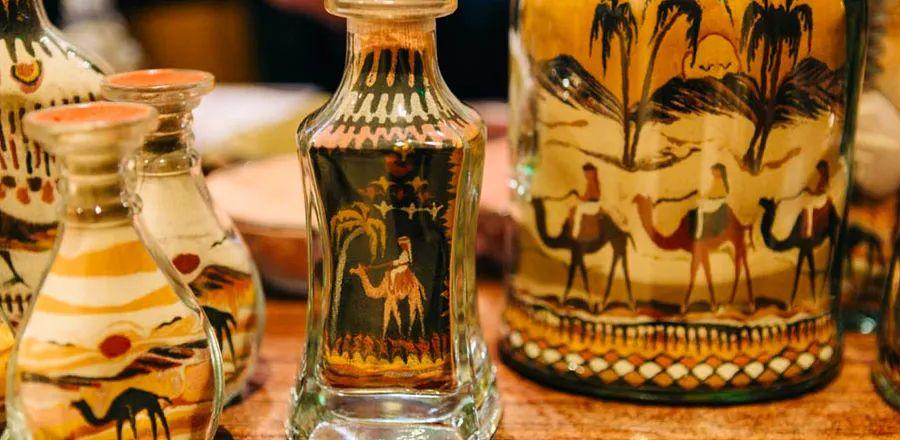Exploring One of Jordan's Last Sand Artists

Petra, Jordan holds a special place in my heart. In 1989, I watched Indiana Jones and the Last Crusade in theaters with my mother at its premiere. The film took us on an adventure with Jones, played by Harrison Ford, as he navigated rugged hills and narrow canyons, passing the Treasury and Great Temple.
In 2021, I found myself in Jordan again. While in the lobby of the Petra Marriott Hotel, I noticed sand artist Reda Amarat amidst a stunning array of bottles, from petite palm-sized ones to grand liter-sized jars, filled with vibrant sand illustrating the region's scenery. These included detailed depictions of mountains, valleys, Biblical stories like the journey of the three wise men, and a starry night sky. Instantly, I was transported back to that cinematic experience.

Photo by Karthika Gupta
Amarat is originally from Wadi Musa, also known as the Valley of Moses, the nearest town to Petra's archaeological site. The hills surrounding Wadi Musa and Petra are rich in sandstones displaying various shades of yellow, purple, brown, pink, and red, resulting from millennia of sediment deposition brought by ancient seas and rivers. Petra’s iconic monuments were sculpted from two main layers of sandstone—the gray Disi Formation and the striking Ishrin formation, recognized for its vivid red and orange tones. Both layers were formed around 500 million years ago during the Paleozoic era.
At the age of 17, Amarat started practicing sand art, and now, three decades later, he belongs to one of the last remaining families of sand artists. The art of Jordanian sand art is thought to have originated with Khalifa Krishna, a painter for the Trans-Jordan Frontier Force, in the early 20th century during British rule. Inspired by the vibrant sandstone cliffs of his homeland, Krishna used bottles discarded by British soldiers to craft his pieces. Picture jars began appearing globally in the 1920s, and the art form has steadily gained recognition. For Amarat, his intricate designs honor Jordan's rich culture and heritage.
Amarat is a purist: he avoids using additives or artificial colors in his creations. He manually grinds rocks he collects into a fine powder to produce the sand he uses. Every spring and winter, he treks up and down the hills in search of colorful rocks—it's a true labor of love. “Sometimes, I discover boulders as large as a table, showcasing two or three colors,” he explains. “I break [them] down with a hammer and occasionally hire workers to help transport the rocks to my car.”

Photo by Karthika Gupta
When his father and grandfather learned the craft of sand art, Amarat recalls they used only two materials—sand and bottles—a tradition he diligently follows. However, as time passed, he yearned to experiment with more intricate designs. From floral patterns to hexagonal bottles featuring detailed scenes of desert life, Amarat has tackled it all. Creating small bottles may take him about 10 minutes, while larger works can require up to 18 hours.
“Genuine sand artists don’t utilize brushes or synthetic colors,” he states. “They depend on their creativity, patience, skill, and a selection of colored sand to produce their art.”
I inquire whether Amarat's children will follow in his footsteps as sand artists—he replies no. He hopes they will pursue their education instead. While it's fine if they take up sand art as a hobby, he prefers them to concentrate on higher learning.
“I will keep creating art that I learned from my father using stones from these rose-hued hills. For me, the legacy of my people over countless years is encapsulated in the weight of this sand,” he expresses. “Petra’s cultural history will endure in these bottles as long as people continue to dream of a bond between themselves and the lands they explore.”
Evaluation :
5/5



